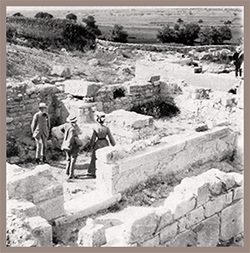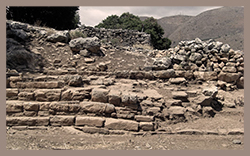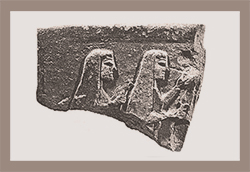download article as .pdf: Per un contributo al tema delle trasformazioni post-classiche dei grandi templi di Agrigento: il Tempio A e il suo sacello
.
The shrine inside the cella of the temple A of Agrigento, generically assigned to the Roman age, is a structure largely ignored by the modern scientific literature. It belongs with the deep transformations which, since the First Punic War, have concerned some of the great temples of Agrigento, from the so-called Olympieion to the temple A. The article illustrates a history of the investigations on the shrine, outlining the main issues which emerged, such as its dating or the typological problem, settled by the division into three parts of the end of the naos. Other important questions are to be added, such as the reconstruction of the worship practices connected with the small building, their relationship with the surviving structures of temple A. As a contribute to the interpretation of the whole area around the so-called lower agorà on the eve of the Roman siege of the city, the article identifies a reuse of the temple A within the fortification built in a state of emergency in 255-254 b.C. in order to defend the natural passage at the South-West part of the city, and links it to the similar and already known use of the Olympieion. This occasion probably constitutes a terminus post quem for the construction of the shrine and the reorganisation of the worship, while it is possible to identify a terminus ante quem in the statue of Asclepius of Augustan age, found in one of the two rooms flanking the naiskos.




